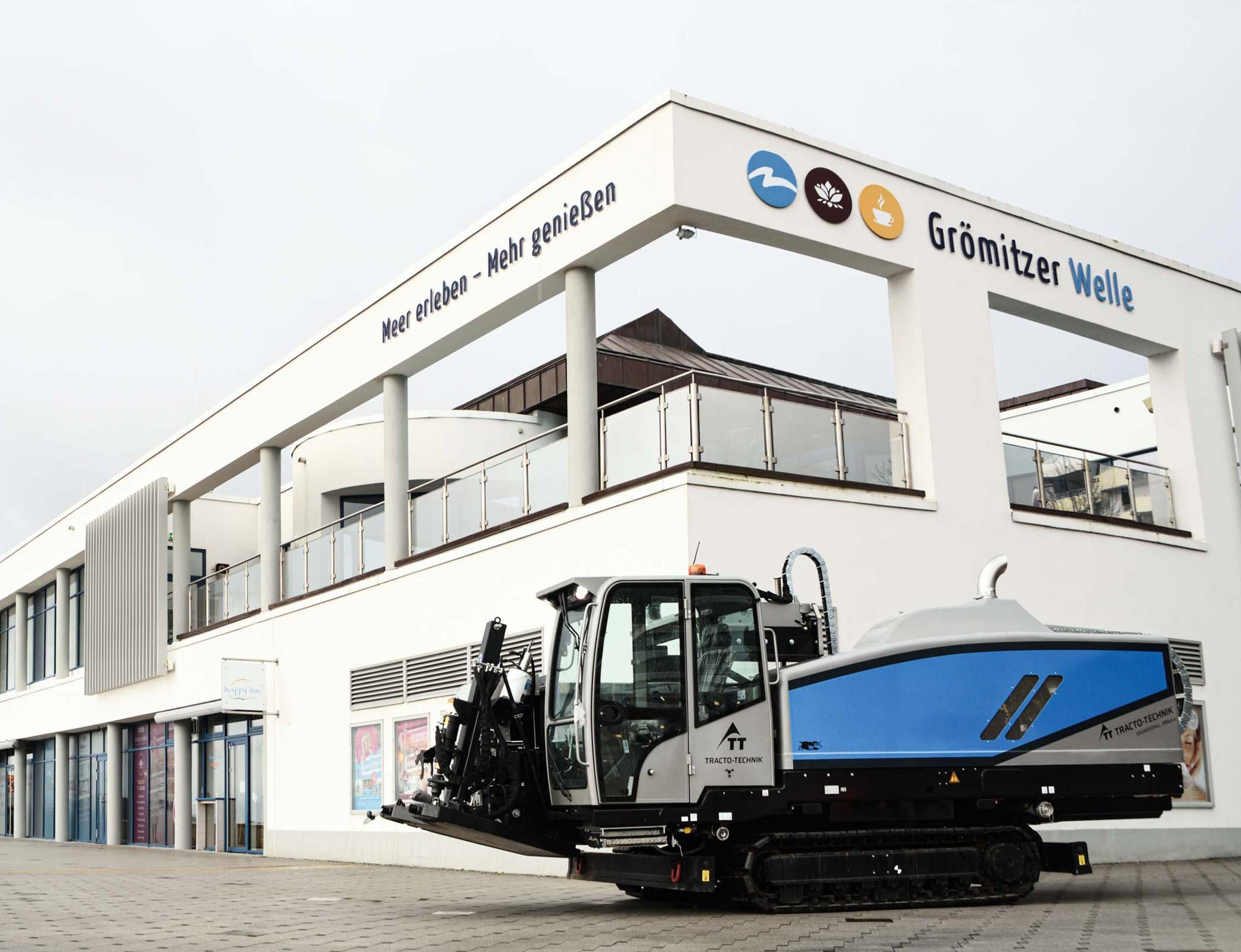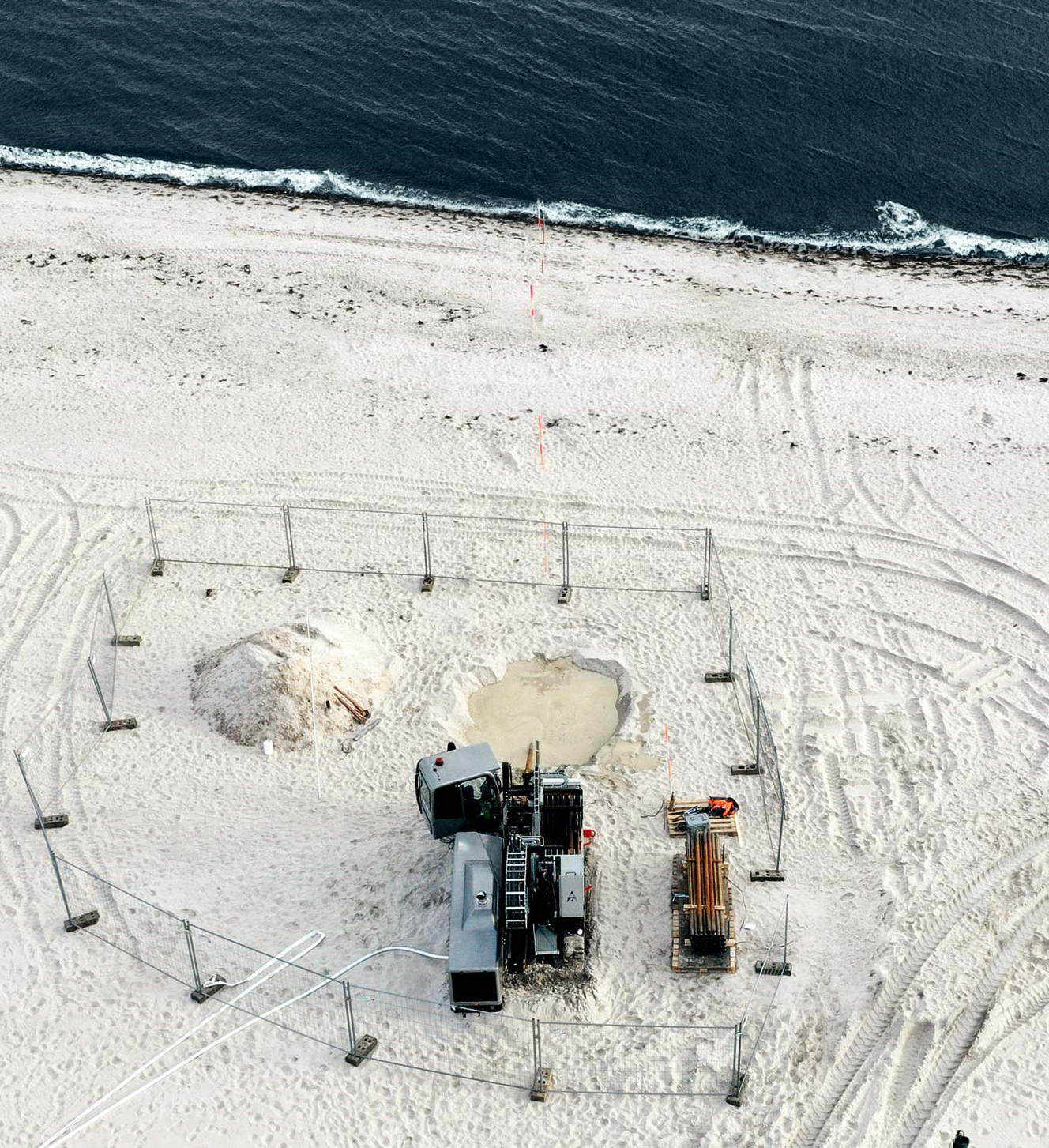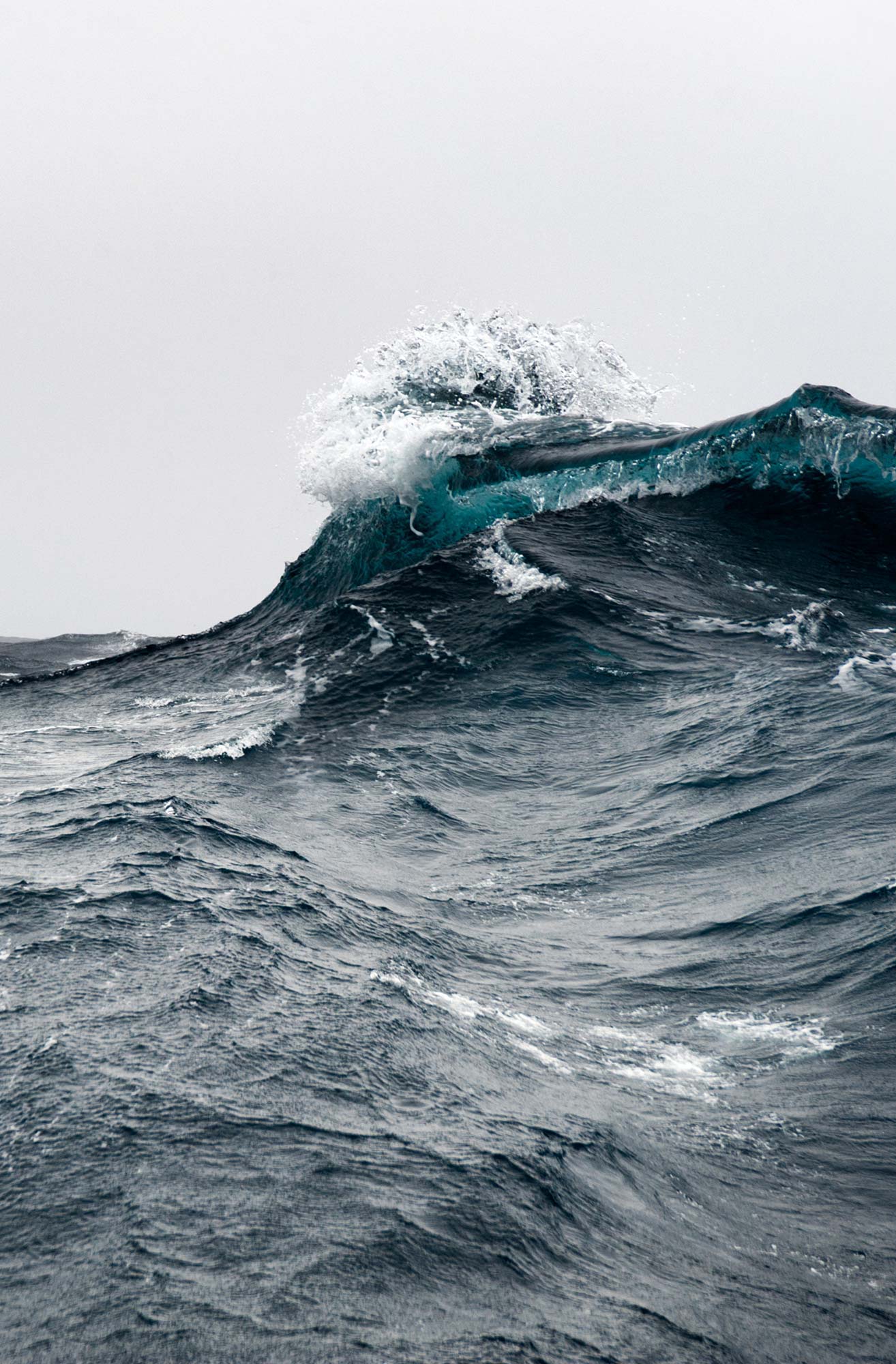IN FOCUS PROJECT: SEAWATER BORE WITH HDD IN THE BALTIC SEA AT GRÖMITZ
PUTTING OUT TO SEA WITH HDD

The water park “Grömitzer Welle” is one of the top attractions of the Baltic Sea resort. A total of 1.1 million litres of sea water offer bathing fun all year round on 1.000 square meters water area. When a transport pipeline for a new seawater withdrawal point had to be installed, the HDD method was applied.
A long sandy beach, romantic dunes, beach promenade with pier. This Baltic Sea idyll attracts over 260.000 overnight guests and around 550.000 day visitors each year to Grömitz. The fun time water park “Grömitzer Welle” is situated directly on the promenade. Here visitors can enjoy the beach feeling with a view of the Lübecker Bay in all weather conditions.
At the beginning of Spring 2020, a new seawater withdrawal point with a 400 m long transport pipeline had to be built in the Baltic Sea to cover the enormous water requirements.
The Baltic Sea landscape, with it’s dunes, natural beaches and bird sanctuaries, reacts extremely sensitive to any external interferences. Installation oft he pipe from the withdrawal point to the connection point at the beach was to be carried out minimally invasive. Thus the parties responsible decided that there was no alternative to a trenchless installation of the transport pipe using the HDD method.
The HDD professionals from contractor who had already completed numerous demanding pipe installation projects in the coastal regions successfully Paasch were awarded the contract for the job.
For the challenge in Grömitz they applied the most powerful bore rig from TRACTO, the GRUNDODRILL 28Nplus.
At the beginning of Spring 2020, a new seawater withdrawal point with a 400 m long transport pipeline had to be built in the Baltic Sea to cover the enormous water requirements.
The Baltic Sea landscape, with it’s dunes, natural beaches and bird sanctuaries, reacts extremely sensitive to any external interferences. Installation oft he pipe from the withdrawal point to the connection point at the beach was to be carried out minimally invasive. Thus the parties responsible decided that there was no alternative to a trenchless installation of the transport pipe using the HDD method.
The HDD professionals from contractor who had already completed numerous demanding pipe installation projects in the coastal regions successfully Paasch were awarded the contract for the job.
For the challenge in Grömitz they applied the most powerful bore rig from TRACTO, the GRUNDODRILL 28Nplus.


The experienced team initially excavated a starting pit on the beach, directly in front of the “Grömitzer Welle” for assembling the new seawater withdrawal point at 3,80 m water depth and installing the transport pipeline. Adjacent to that the GRUNDODRILL 28Nplus was set-up. A work boat with pontoon float was then placed in position for the various measuring and directional checks during the bore process. The pipe section to be installed was suspended from the ship by a crane, ready for further action.
The pilot bore from the beach into the fine sand in the direction of the Baltic Sea went smoothly, without any problems. Along the bore path on the water the staff stretched a rope and drove the detection system back and forth with a boat. The GRUNDODRILL 28Nplus worked like clockwork: at 2,50 below the top edge of the seabed, the pilot bore progressed metre by metre.
After reaching the target pit beneath the Baltic Sea, the divers were now in demand. It was their task to retrieve the bore head and exchange it for a stepped reamer and also to attach the product pipe. The experienced and reliable diving team carried out the numerous tasks and gave the signal for pipe pulling to begin. This was completed, together with the simultaneous retrieval of the drill rods in approximately 15 hours. By the way they also installed the seawater extraction point, which finally feeds the new pipeline for the “Grömitzer Welle”.
The divers and crew of the support vessel, the Paasch bore crew have proved, together with the GRUNDODRILL 28Nplus, to be truly Top-Performers. The pilot bore and the pipe installation were completed in only three days – an unbeatable time in comparison to the open trench method. The sensitive landscape remained completely intact and the holiday makers were able to continue their beach life completely undisturbed.
The pilot bore from the beach into the fine sand in the direction of the Baltic Sea went smoothly, without any problems. Along the bore path on the water the staff stretched a rope and drove the detection system back and forth with a boat. The GRUNDODRILL 28Nplus worked like clockwork: at 2,50 below the top edge of the seabed, the pilot bore progressed metre by metre.
After reaching the target pit beneath the Baltic Sea, the divers were now in demand. It was their task to retrieve the bore head and exchange it for a stepped reamer and also to attach the product pipe. The experienced and reliable diving team carried out the numerous tasks and gave the signal for pipe pulling to begin. This was completed, together with the simultaneous retrieval of the drill rods in approximately 15 hours. By the way they also installed the seawater extraction point, which finally feeds the new pipeline for the “Grömitzer Welle”.
The divers and crew of the support vessel, the Paasch bore crew have proved, together with the GRUNDODRILL 28Nplus, to be truly Top-Performers. The pilot bore and the pipe installation were completed in only three days – an unbeatable time in comparison to the open trench method. The sensitive landscape remained completely intact and the holiday makers were able to continue their beach life completely undisturbed.